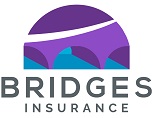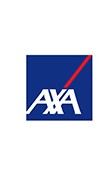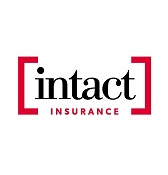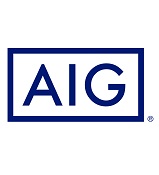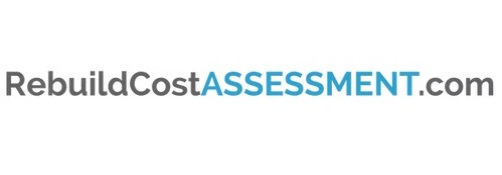Insurance for Cladding Buildings
July 22, 2025
Insurance for Cladding Buildings and Blocks of Flats: Understanding Risks and Finding Cover
The Grenfell Tower tragedy fundamentally changed how insurers view cladding and composite panels in UK buildings. Securing adequate insurance coverage has become increasingly complex for property owners, but it's certainly not impossible.
Understanding the insurance landscape for clad buildings is crucial for protecting your investment and ensuring your residents' safety. This comprehensive guide explores the risks, solutions, and practical steps you need to take when insuring buildings with cladding systems.
Insurance for Cladded Buildings
Following the devastating fire at Grenfell Tower in 2017, insurers have significantly tightened their approach to buildings with external cladding systems. This heightened scrutiny isn't simply about risk aversion—it's about understanding and properly pricing the genuine fire risks that certain cladding materials can present.
Insurers still want to provide cover for these properties. Buildings with cladding represent a substantial portion of the UK's housing stock, particularly in the social housing and purpose-built flat sectors. We also see examples of cladding in commercial buildings and industrial estates. The key lies in demonstrating that risks are properly understood, managed, and mitigated.
Understanding Cladding and Composite Panel Risks
What Makes Cladding a Concern?
Cladding systems typically consist of an outer protective layer, insulation material, and often an air cavity designed to improve thermal efficiency and weather protection. The risk concerns primarily centre on:
- Combustible core materials: Expanded polystyrene, polyurethane, and polyisocyanurate fillings can contribute to rapid fire spread
- Cavity barriers: Inadequate fire stopping within cavities can allow flames and smoke to travel vertically
- External fire spread: Some cladding systems can facilitate fire spread across the building's exterior
- Toxic smoke production: Certain materials can produce dangerous gases when burning
What is the difference between PIR and PUR panels?
It is important to make the distinction between insulation panels which are called PUR or PIR. PUR is a polyurethane that was used to make sandwich panels until recently. PIR is a polyisocyanurate that is slowly replacing it. Although the two materials are similar, PIR panels offer superior fire protection compared to PUR panels, making PIR the preferred choice for safety-critical applications like roof structures. It is important to understand this difference as insurers may want this information when they provide a quote.
Why the Insurance Industry Takes This Seriously
Large-scale cladding fires can result in:
- Total building loss running into tens of millions of pounds
- Significant business interruption claims
- Substantial liability exposure for property owners and management companies
- Complex legal proceedings that can span years
Types of Cladding Systems and Insurance Implications
High-Risk Materials Buildings with expanded polystyrene, polyurethane, or polyisocyanurate insulation cores typically face:
- Higher insurance premiums (often 50-200% above standard rates)
- More stringent fire safety requirements
- Possible coverage exclusions or restrictions
- Mandatory risk improvement measures
Lower-Risk Materials Properties with mineral wool or mineral fibre insulation generally receive:
- Standard insurance terms and pricing
- Fewer additional requirements
- Broader coverage options
- Faster underwriting processes
LPCB-Approved Systems Cladding systems approved by the Loss Prevention Certification Board (LPCB) offer significant advantages:
- Enhanced fire performance standards
- Greater insurer confidence
- More competitive premium rates
- Streamlined underwriting processes
Insurance Solutions for Cladded Buildings
Specialist Insurers Several UK insurers have developed expertise in cladding risks, understanding the technical aspects of different cladding systems and differentiating between high and low-risk installations. These specialist insurers offer tailored coverage solutions and work collaboratively with clients to implement risk improvements, moving beyond blanket exclusions to provide nuanced underwriting approaches.
Risk Management Approach Progressive insurers focus on comprehensive risk management strategies, emphasising robust fire safety procedures and regular inspections, ensuring proper fire barriers are in place and maintained through effective compartmentation, implementing advanced fire alarm and sprinkler systems for detection and suppression, establishing clear and practiced emergency evacuation plans, and maintaining documented inspection and maintenance programmes that demonstrate ongoing commitment to building safety.
Coverage Enhancements Specialist policies may include a range of enhanced coverage options such as temporary accommodation costs for residents, loss of rent coverage for landlords, enhanced legal liability protection, business interruption cover for commercial premises, and alternative accommodation guarantees that provide additional security for both property owners and occupants during potential disruption.
Why Insurers Need Complete Cladding Specifications
1. Technical Assessment Requirements
Insurers require detailed specifications because cladding systems vary enormously in their fire performance. Critical information includes:
- Core material composition: The exact type and grade of insulation used
- Facing materials: Whether aluminium, steel, or composite outer layers are used
- Thickness specifications: Both insulation and facing layer dimensions
- Cavity construction: Whether cavities exist and how they're constructed
- Fire barrier details: Location and specification of cavity barriers
- Manufacturer information: Product data sheets and fire test certificates
- Installation standards: Whether the installation followed the manufacturer's guidelines
2. Risk Differentiation
This detailed information allows insurers to:
- Accurately assess fire spread potential
- Price risks appropriately rather than applying blanket exclusions
- Identify opportunities for risk improvement
- Provide tailored coverage recommendations
- Meet regulatory requirements for risk assessment
3. Regulatory Compliance
Since the Building Safety Act 2022, insurers must demonstrate they understand the risks they cover. Comprehensive cladding specifications help insurers:
- Meet regulatory expectations
- Justify their underwriting decisions
- Ensure appropriate reserves are held
- Comply with reporting requirements
Practical Steps for Securing Insurance for Buildings with Cladding
- Conduct a comprehensive cladding survey: Engage a qualified surveyor to identify all external wall systems and their specifications
- Gather technical documentation: Collect manufacturer data sheets, installation certificates, and any fire test reports
- Implement fire safety measures: Ensure fire safety systems are current and well-maintained
- Engage specialist brokers: Work with insurance brokers who understand cladding risks and have access to specialist markets
- Consider remediation: Where high-risk cladding is identified, evaluate remediation options and their impact on insurance costs
What Next? – Insurance for Buildings with Cladding
The insurance market for buildings with cladding is gradually stabilising as insurers develop better risk assessment capabilities, building owners implement safety improvements, government remediation programmes progress, and industry knowledge and expertise grow.
Future Considerations
Successful insurance procurement will depend on building owners actively managing and improving their fire safety, working with professionals who understand both construction and insurance requirements, building relationships with insurers and brokers who specialise in these risks, and regularly reviewing and updating fire safety measures.
Finding the Right Insurance Partner
Securing appropriate insurance for cladded buildings requires specialist expertise and market knowledge. We have had successful outcomes for property clients because we are.
- A Specialist broker with cladding experience, closely working with insurers, with whom we’ve built relationships over many years.
- We have technical knowledge and industry expertise within the team,
- We give you independent advice and can recommend insurance products to you
- We are familiar with building safety regulations and insurance requirements
The insurance market for clad buildings has undoubtedly become more complex, but insurance remains available for building owners who take a proactive, informed approach to risk management. By understanding the risks, implementing appropriate safety measures, and working with specialist insurance brokers, it's possible to secure comprehensive coverage that protects both buildings and their occupants.
Every building is unique, and insurance solutions should be tailored accordingly. Investing in proper risk assessment and specialist advice typically pays dividends in improved safety and more favourable insurance terms.
Get a Quote
Call us today to find out how we can help you insure your building with cladding. Even if your renewal is some way off, we can help now. Call the office on 01843 293614
